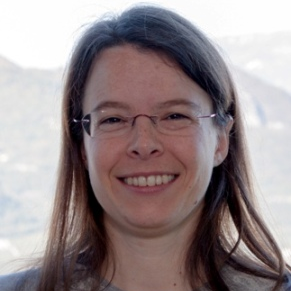Analysis of Multi-temporal Remote Sensing Images
A special issue of Remote Sensing (ISSN 2072-4292). This special issue belongs to the section "Remote Sensing Image Processing".
Deadline for manuscript submissions: closed (31 October 2018) | Viewed by 113333
Special Issue Editors
Interests: time series analysis; multitemporal image processing; change detection; multitemporal data fusion; multitemporal classification and domain adaptation; trend analysis; regression analysis; damage assessment
Special Issues, Collections and Topics in MDPI journals
Interests: synthetic aperture radar (SAR); SAR interferometry; changing detection; despeckling; denoising; edge detection; SAR tomography
Special Issues, Collections and Topics in MDPI journals
2. School of Information Science and Technology, Southwest Jiaotong University, Chengdu, China
Interests: signal/image/video processing; visual computing; machine learning; cognitive computing; remote sensing data modelling and processing
Special Issues, Collections and Topics in MDPI journals
Special Issue Information
Dear Colleagues,
Nowadays, the amount and availability of multitemporal images are experiencing a fast increase. This is due to the increasing number of space missions, the increases in data temporal resolution, as well as to the free access data policy adopted for missions like Landsat and Sentinel. In this context, there is room for the development of both novel methodologies and applications for image time series employment. This Special Issue on “Analysis of Multi-Temporal Remote Sensing Images” aims at publishing sound work improving the state-of-the-art in the following (but not exclusively) aspects of multitemporal information extraction: multitemporal images pre-processing (calibration, correction and registration techniques); multitemporal data harmonization, multitemporal image/time series analysis (classification, trend analysis, regression); mining in multitemporal data/time series; change detection; multitemporal data fusion; validation approaches for multi-temporal data analysis; etc. Any kind of data (optical passive sensor images, active SAR images, low to VHR resolution images, multi- to hyper-spectral data, multi-to hyper temporal data) can be considered, as well as any kind of application (climate change; agriculture, cryosphere, biodiversity, land-cover and -use dynamics, forestry, disaster/damage assessment, etc.).
Dr. Francesca Bovolo
Dr. Giampaolo Ferraioli
Prof. Turgay Celik
Guest Editors
Manuscript Submission Information
Manuscripts should be submitted online at www.mdpi.com by registering and logging in to this website. Once you are registered, click here to go to the submission form. Manuscripts can be submitted until the deadline. All submissions that pass pre-check are peer-reviewed. Accepted papers will be published continuously in the journal (as soon as accepted) and will be listed together on the special issue website. Research articles, review articles as well as short communications are invited. For planned papers, a title and short abstract (about 100 words) can be sent to the Editorial Office for announcement on this website.
Submitted manuscripts should not have been published previously, nor be under consideration for publication elsewhere (except conference proceedings papers). All manuscripts are thoroughly refereed through a single-blind peer-review process. A guide for authors and other relevant information for submission of manuscripts is available on the Instructions for Authors page. Remote Sensing is an international peer-reviewed open access semimonthly journal published by MDPI.
Please visit the Instructions for Authors page before submitting a manuscript. The Article Processing Charge (APC) for publication in this open access journal is 2700 CHF (Swiss Francs). Submitted papers should be well formatted and use good English. Authors may use MDPI's English editing service prior to publication or during author revisions.
Keywords
- time series analysis,
- multitemporal image processing/classification,
- change detection and damage assessment,
- multitemporal data fusion,
- domain adaptation,
- trend analysis,
- regression analysis,
- biophysical parameter estimation
- big data in temporal data analysis
Benefits of Publishing in a Special Issue
- Ease of navigation: Grouping papers by topic helps scholars navigate broad scope journals more efficiently.
- Greater discoverability: Special Issues support the reach and impact of scientific research. Articles in Special Issues are more discoverable and cited more frequently.
- Expansion of research network: Special Issues facilitate connections among authors, fostering scientific collaborations.
- External promotion: Articles in Special Issues are often promoted through the journal's social media, increasing their visibility.
- e-Book format: Special Issues with more than 10 articles can be published as dedicated e-books, ensuring wide and rapid dissemination.
Further information on MDPI's Special Issue polices can be found here.







